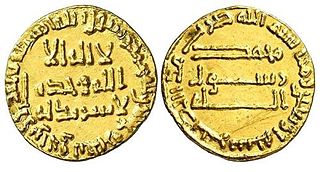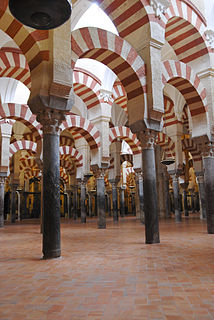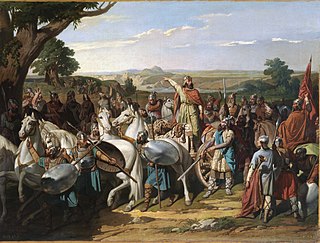Related Research Articles

The Arabs are a meta-ethnic group mainly inhabiting the Arab world. They are descended from nomadic pastoralists who travelled around the Arabian Peninsula and Syrian Desert regions, and who organised themselves in tribal social structures.

Damascus is the capital of Syria; it became the country's largest city in the early 2010s, following the decline in population of Aleppo during the battle for the city. It is colloquially known in Syria as aš-Šām (الشَّام) and titled the "City of Jasmine". Damascus is a major cultural center of the Levant and the Arab world. The city had an estimated population of 2,079,000 as of 2019.

The Middle East is a transcontinental region in Afro-Eurasia which generally includes Western Asia, all of Egypt, and Turkey. The term has come into wider usage as a replacement of the term Near East beginning in the early 20th century. The broader concept of the "Greater Middle East" also includes the Maghreb, Sudan, Djibouti, Somalia, the Comoros, Afghanistan, Pakistan, and sometimes Transcaucasia and Central Asia into the region. The term "Middle East" has led to some confusion over its changing definitions.

Amman is the capital and largest city of Jordan and the country's economic, political and cultural centre. With a population of 4,007,526, Amman is the largest city in the Levant region and the sixth-largest city in the Arab world.

Berbers or Imazighen are an ethnic group native to North Africa and West Africa, specifically Morocco, Algeria, Tunisia, Libya, Mauritania, northern Mali, northern Niger and the Canary Islands. Smaller Berber populations are also found in Burkina Faso and Egypt's Siwa Oasis.

The Umayyad Caliphate was the second of the four major caliphates established after the death of Muhammad. The caliphate was ruled by the Umayyad dynasty. The third caliph of Rashidun Caliphate, Uthman ibn Affan, was also a member of the Umayyad clan. The family established dynastic, hereditary rule with Muawiya ibn Abi Sufyan, long-time governor of al-Sham, who became the sixth caliph after the end of the First Muslim Civil War in 661. After Mu'awiyah's death in 680, conflicts over the succession resulted in a Second Civil War and power eventually fell into the hands of Marwan I from another branch of the clan. The region of Syria remained the Umayyads' main power base thereafter, and Damascus was their capital.

The Abbasid Caliphate was the third caliphate to succeed the Islamic prophet Muhammad. It was founded by a dynasty descended from Muhammad's uncle, Abbas ibn Abdul-Muttalib, from whom the dynasty takes its name. They ruled as caliphs for most of the caliphate from their capital in Baghdad in modern-day Iraq, after having overthrown the Umayyad Caliphate in the Abbasid Revolution of 750 CE (132 AH). The Abbasid Caliphate first centered its government in Kufa, modern-day Iraq, but in 762 the caliph Al-Mansur founded the city of Baghdad, near the ancient Sasanian capital city of Ctesiphon. The Abbasid period was marked by reliance on Persian bureaucrats for governing the territories as well as an increasing inclusion of non-Arab Muslims in the ummah. Persian customs were broadly adopted by the ruling elite, and they began patronage of artists and scholars. Baghdad became a center of science, culture, philosophy and invention in what became known as the Golden Age of Islam.

The history of Iran, which was commonly known until the mid-20th century as Persia in the Western world, is intertwined with the history of a larger region, also to an extent known as Greater Iran, comprising the area from Anatolia, the Bosphorus, and Egypt in the west to the borders of Ancient India and the Syr Darya in the east, and from the Caucasus and the Eurasian Steppe in the north to the Persian Gulf and the Gulf of Oman in the south.

Al-Mansur or Abu Ja'far Abdallah ibn Muhammad al-Mansur (; Arabic: أبو جعفر عبدالله بن محمد المنصور; 95AH – 158 AH was the second Abbasid Caliph reigning from 136 AH to 158 AH and succeeding Abu al-'Abbas as-Saffah. He known for founding the 'round city' of Madinat al-Salam which was to become the core of imperial Baghdad.

Jerash is a city in northern Jordan. The city is the administrative center of the Jerash Governorate, and has a population of 50,745 as of 2015. It is located 48 kilometres (30 mi) north of the capital city Amman.

Islamic architecture comprises the architectural styles of buildings associated with Islam. It encompasses both secular and religious styles from the early history of Islam to the present day. Early Islamic architecture was influenced by Roman, Byzantine, Persian, Mesopotamian architecture and all other lands which the Early Muslim conquests conquered in the seventh and eighth centuries. Further east, it was also influenced by Chinese and Mughal architecture as Islam spread to Southeast Asia. Later it developed distinct characteristics in the form of buildings, and the decoration of surfaces with Islamic calligraphy and geometric and interlace patterned ornament. New architectural elements like cylindrical minarets, muqarnas, arabesque, multifoil were invented. The principal Islamic architectural types for large or public buildings are: the mosque, the tomb, the palace, and the fort. From these four types, the vocabulary of Islamic architecture is derived and used for other buildings such as public baths, fountains and domestic architecture.

Khorāsān, sometimes called Greater Khorasan, is a historical region which formed the northeast province of Greater Iran. The name signifies "the Land of the Sun" or "the Eastern Province".

The Umayyadconquest of Hispania, also known as the Muslim conquest of the Iberian Peninsula or the Umayyad conquest of the Visigothic Kingdom, was the initial expansion of the Umayyad Caliphate over Hispania from 711 to 718. The conquest resulted in the destruction of the Visigothic Kingdom and the establishment of the Umayyad wilaya of Al-Andalus. The conquest marks the westernmost expansion of both the Umayyad Caliphate and Muslim rule into Europe.

The Battle of the Katzbach on 26 August 1813, was a major battle of the Napoleonic Wars between the forces of the First French Empire under Marshal MacDonald and a Russo-Prussian army of the Sixth Coalition under Prussian Marshal Graf (Count) von Blücher. It occurred during a heavy thunderstorm at the Katzbach river between Wahlstatt and Liegnitz in the Prussian province of Silesia. Taking place the same day as the Battle of Dresden, it resulted in a Coalition victory, with the French retreating to Saxony.

Jordanian art has a very ancient history. Some of the earliest figurines, found at Aïn Ghazal, near Amman, have been dated to the Neolithic period. A distinct Jordanian aesthetic in art and architecture emerged as part of a broader Islamic art tradition which flourished from the 7th-century. Traditional art and craft is vested in material culture including mosaics, ceramics, weaving, silver work, music, glass-blowing and calligraphy. The rise of colonialism in North Africa and the Middle East, led to a dilution of traditional aesthetics. In the early 20th-century, following the creation of the independent nation of Jordan, a contemporary Jordanian art movement emerged and began to search for a distinctly Jordanian art aesthetic that combined both tradition and contemporary art forms.

The Battle of Heliopolis was a French victory by the armée d'Orient under General Kléber over the Ottoman army at Heliopolis on 20 March 1800.

The Amman Citadel is a historical site at the center of downtown Amman, the capital of Jordan. The L-shaped hill is one of the seven hills (jabals) that originally made up Amman.
The Abbasid Revolution, also called the Movement of the Men of the Black Raiment, was the overthrow of the Umayyad Caliphate, the second of the four major Caliphates in early Islamic history, by the third, the Abbasid Caliphate. Coming to power three decades after the death of the Muslim prophet Muhammad and immediately after the Rashidun Caliphate, the Umayyads were a feudal Arab empire ruling over a population which was overwhelmingly non-Arab as well as primarily non-Muslim. Non-Arabs were treated as second-class citizens regardless of whether or not they converted to Islam, and this discontent cutting across faiths and ethnicities ultimately led to the Umayyads' overthrow. The Abbasid family claimed to have descended from al-Abbas, an uncle of the Prophet.

The region of Syria, known in modern literature as Greater Syria, "Syria-Palestine", or the Levant, is an area east of the Mediterranean Sea. The region has been controlled by numerous different peoples, including ancient Egyptians, Canaanites, Israelites, Assyria, Babylonia, the Achaemenid Empire, the ancient Macedonians, the Roman Empire, the Byzantine Empire, the Rashidun Caliphate, the Umayyad Caliphate, the Abbasid Caliphate, the Fatimid Caliphate, the Crusaders, the Ayyubid dynasty, the Mamluk Sultanate, the Ottoman Empire, the United Kingdom and the French Third Republic.
Punjabi Muslims are a linguistic, geographic and religious ethnic group living in the region of Punjab, primarily in Pakistan. Forming the majority of the Punjabi ethnicity, Punjabi Muslims are those who profess Islam and speak or identify the Punjabi language as a mother tongue. With a population of more than 90 million they are the largest ethnic group in Pakistan and the world's third largest Muslim ethnicity, after Arabs, and Bengalis The majority of Punjabi Muslims are adherents of the Sunni branch of Islam. A minority adheres to Shia and other sects, including the Ahmadiyya community which originated in Punjab.
References
- ↑ Arthur Gilman (2004). The Saracens from the Earliest Times to the Fall of Baghdad. p. 329. ISBN 1417912480 . Retrieved August 6, 2015.
- ↑ Tucker, Spencer C. (2009). A Global Chronology of Conflict: From the Ancient World to the Modern Middle East: From the Ancient World to the Modern Middle East. ABC-CLIO. p. 208. ISBN 1851096728 . Retrieved August 6, 2015.
| | This biographical article about a person notable in connection with Islam is a stub. You can help Wikipedia by expanding it. |